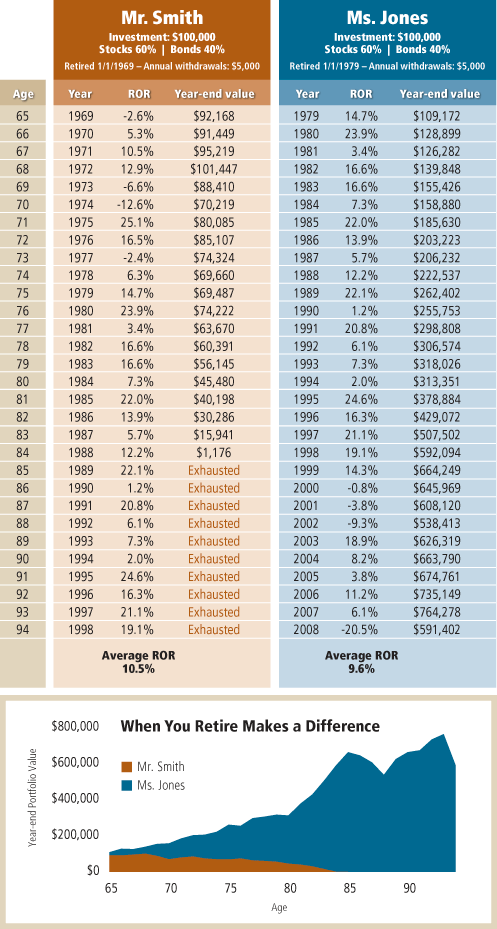
How NOT to Run Out of Money in Retirement
In the good old days American workers could retire with a guaranteed benefit from Social Security, or a guaranteed lifetime pension. If an amount of savings was invested in the stock market it was likely to earn gang buster returns.
Needless to say, retirement planning is more complicated today.
Now retirees have investment plans such as the 401(k), 403(b), etc… and the time of retirement has expanded. People are living longer and the need for a reliable income to bridge the next 20 to 30 years puts pressure on your investments.
Figuring out a realistic way to retire can become a cumbersome task. Guidelines such as a 60/40 allocation, or the 4% withdrawal rule face new challenges for those who are transitioning a portion of their money out of aggressive investments such as stocks, to more conservative investments like bonds or fixed products.
These guidelines don’t always work for today’s retirees because in our current investment climate, it’s not enough to earn a good rate of return.
Running out of money is the biggest fear to retirees!
Retirees need to protect their capital and make it last! The secret to ensuring retiree’s won’t run out of money is to understand the sequence of return risk.
It’s all about risk. And it reveals that successful retention for the long-haul is more than the rate of return or the amount of investment loss. The sequence of return risk hinges on two things: TIMING and LOSS OCCURRENCE. These two factors will dictate whether or not you will run out of money!
For example, imagine two investors who retire at different times. One (Mr. Smith) retirees in 1969 with $100,000. The other (Ms. Jones) retirees in 1979 with the same amount. Both invest in a mix of stocks and bonds, withdrawing 5% per year, at first. Over time they increase their the amount of money withdrawn to keep up with inflation.
Look at the chart below by John Hancock. Notice how the ten-year difference in dates (when money was withdrawn) made a significant impact.

How Sequence of Return Risk Works
Mr. Smith averaged over 30 years a rate of return of 10.5%. Ms. Jones averaged over the same number of years 9.6%. So why did Mr. Smith run out of money in year 20? Because of the sequence of his returns!
In the first 10 years, Mr. Smith experienced negative returns. Remember the risk to you as a retiree when you are withdrawing money is WHEN the loss occurs. The combination of these two exhausted Mr. Smith’s portfolio in year 20.
Ms. Jones on the other hand averaged a rate of return of 9.6%. Almost a full percent per year less, over 30 years. Why did Ms. Jones not run out of money and still have a remaining balance of $504,492? Again, even with a 5% withdraw plus increases, WHEN the loss occurred was the difference between making her money last.
In this example, it is not enough just to average a good rate of return. During your distribution years as a retiree, you need to have ALL of your investments working together in support of your new goal: RETIREMENT INCOME!
By recognizing this shift in mindset that needs to happen during your retirement years, you understand the need to pair various investments together for RELIABLE income. Things like your Social Security benefit and a pension, if present. It might also include rental income, real estate investments, stock dividends, government bond yields and income payments from annuities.
Understand the sequence of returns against the backdrop of the stock market. And remember, look at your investments NOT in terms of the return they can earn, but in the terms of the INCOME they can provide.
What to do so you don't run out of money
- Identify which financial phase your are in (accumulation or distribution)
- Understand how the sequence of returns could affect your portfolio
- Have the right outlook on your investments and the INCOME they can provide
Struggling With How To Manage Your Retirement So You Don't Run Out Of Money?
Receive a FREE test of your current Retirement Plan.